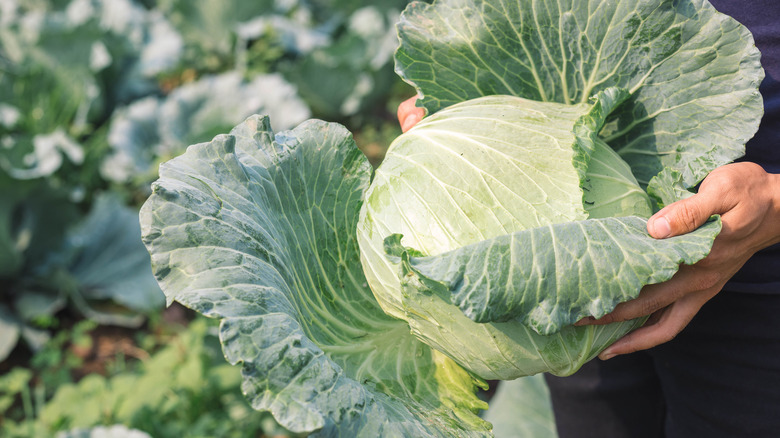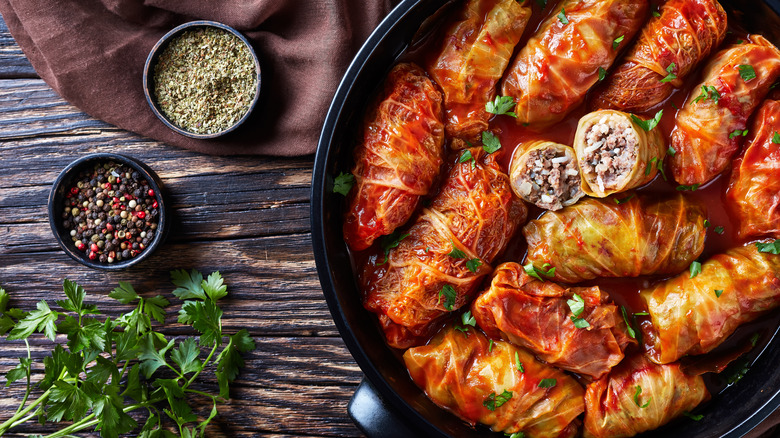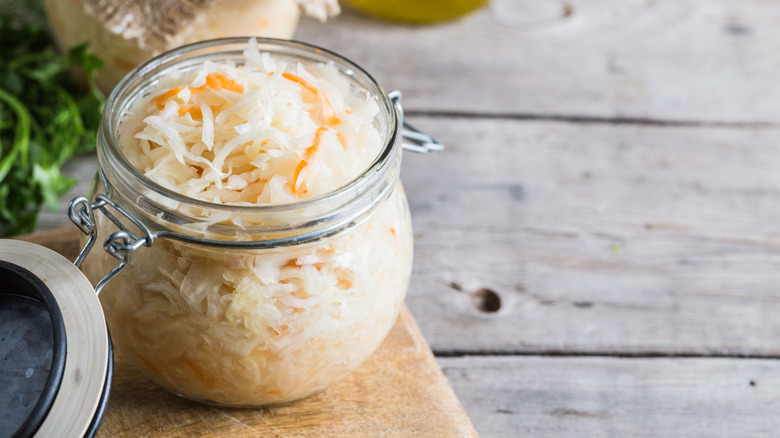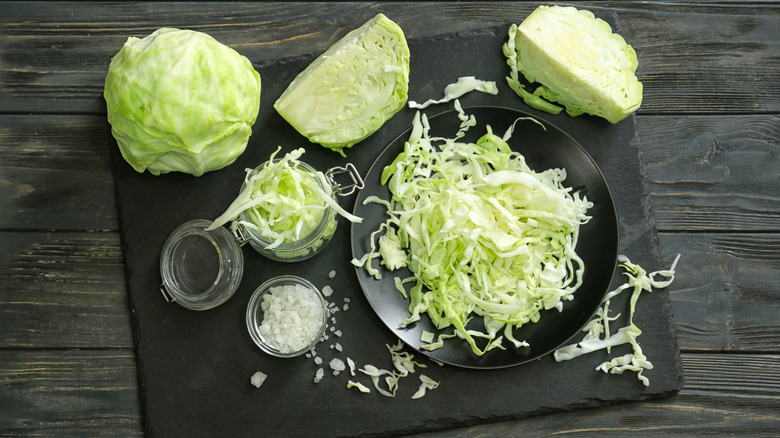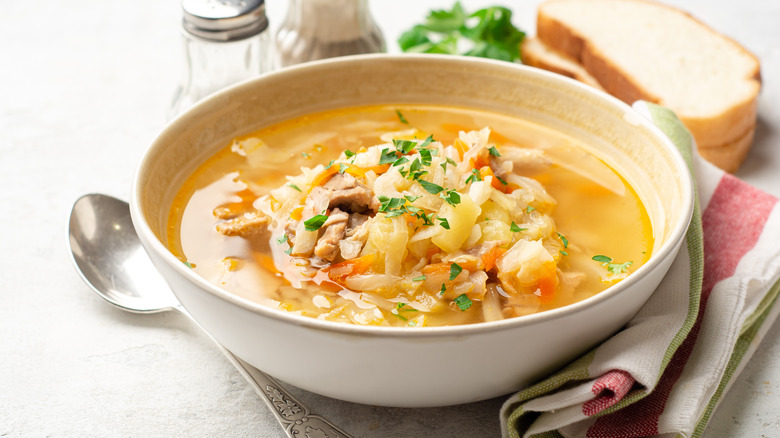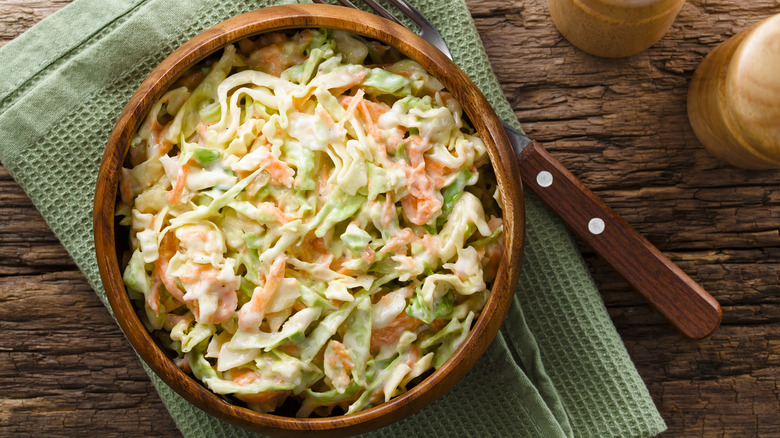5 Ways To Use Up Outer Cabbage Leaves
So you've just gotten home from the farmers market, and you've got a shiny, round cabbage among your haul of fruits and vegetables, ready to be sliced into coleslaw or braised with bacon. Unfortunately for the environment and your wallet, when preparing cabbage most people snap off the outer leaves, which, in addition to being a little tougher, might have some blemishes or dirt. But is this really a necessary step?
In the spirit of root-to-stem cooking, you might want to try to make use of those "leftover" cabbage leaves the next time you're cooking up the crucifer. Instead of tossing them into your compost bin, here are five ways to use outer cabbage leaves and reduce waste in the kitchen.
Make stuffed cabbage
Stuffed cabbage is a warm, filling meal that's perfect on a cold winter night. Common in the cuisines of Central and Eastern Europe, according to The Spruce Eats, stuffed cabbage — or cabbage rolls — is an ideal way to use up outer cabbage leaves because the dish braises for quite some time, allowing the tough leaves to become tender.
For best results, parboil the leaves for a few minutes and then cut out the tough stem before rolling the leaves around a flavorful stuffing that usually features ground meat, rice, and fresh herbs (via Where Are The Chickens?).
Make kimchi or sauerkraut
If you've ever made homemade kimchi or sauerkraut, both of which are salt-fermented preparations of cabbage, then you know that after chopping, salting, and packing the cabbage into its fermentation vessel, you need to place something on top to keep the prepared cabbage under the surface of the brine so it will pickle in (via Cultures for Health).
Outer cabbage leaves work perfectly for this task: the next time you make kimchi or kraut, reserve a few of the leaves, then tuck them over the salted veg after you've placed it into the containers in which it will ferment.
Make spicy Japanese cabbage
According to the food blog Hiroko's Recipes, which often features Japanese dishes, tough outer cabbage leaves are actually the perfect ingredient for a sweet-and-spicy cabbage dish that can be made to accompany sake or other alcoholic drinks. These small appetizers and side dishes — called sakana food — feature an array of textures, including rubbery, chewy, and tough.
Japanese spicy cabbage calls for chopped, deveined outer cabbage leaves that are parboiled, drained, and then simmered in a sauce made from sake, soy sauce, sugar, rice vinegar, chili garlic sauce, and sesame seeds.
Make cabbage soup or stew
Cabbage makes frequent appearances in soups and stews, ranging from beef and potato stew, per Taste of Home, to French soupe au chou (via The French Cooking Academy), to Korean baechu guk with ginger and scallions (via The Spruce Eats).
Though these recipes typically call for the softer inner leaves of cabbage, the outer leaves can be used as well, as they will have ample time to cook and soften. Remove any tough veins, chop the leaves finely, and toss them into the long-cooked dishes, where they'll tenderize nicely as they simmer on the stove.
Make slaw
Coleslaw — that classic side dish typically featuring shredded cabbage and other vegetables — is an ideal accompaniment to so many dishes, from grilled chicken to sticky ribs. Whichever version tickles your taste buds — from a standard mayo-based slaw to a spicy Asian slaw with chile paste and rice vinegar — is suitable for softening tough cabbage leaves.
As the vegetables sit, they're tenderized by the salt and acid present in the dressing. When including outer cabbage leaves in a slaw, just make sure to shred them finely and allow a bit of extra marinating time before serving the side dish.
